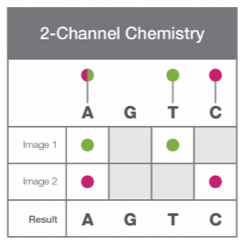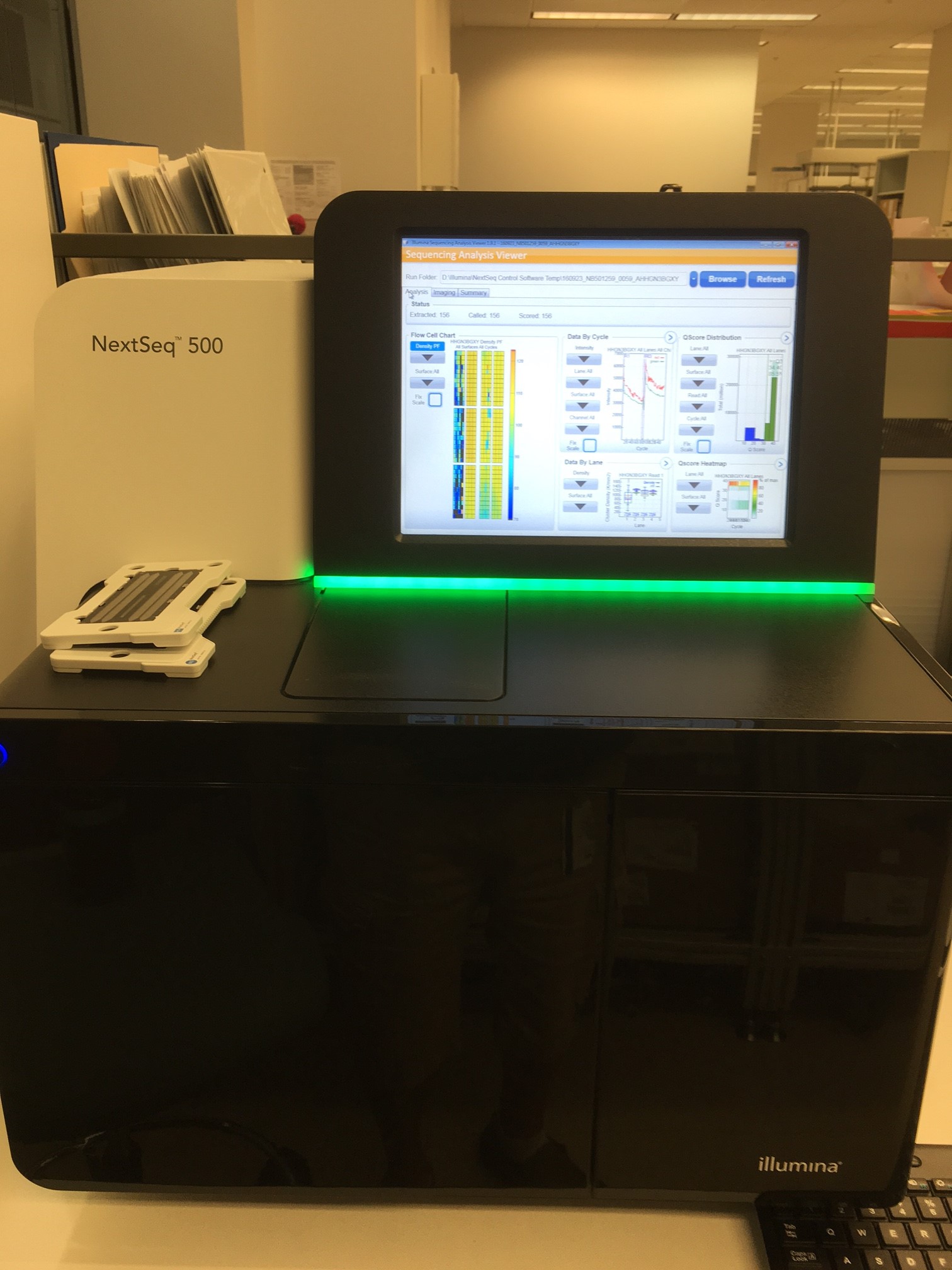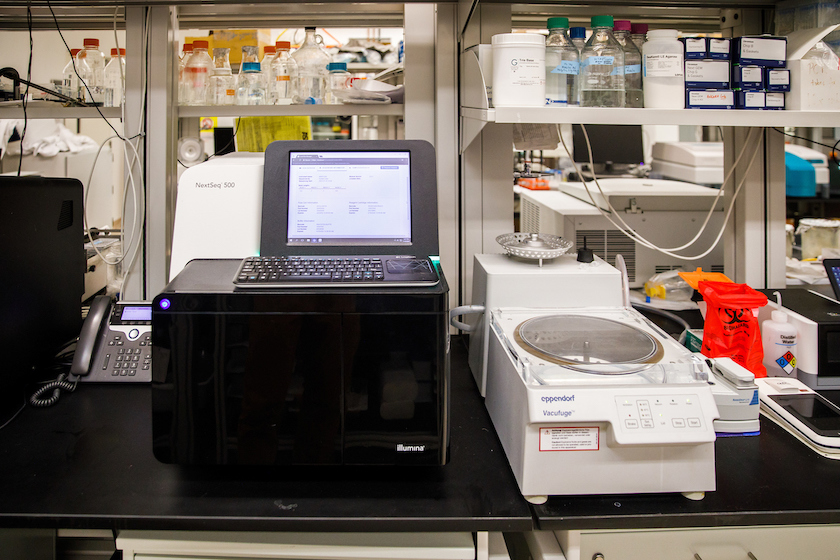The NextSeq used to sequence NGS libraries. The run modules available are a mid-output with 130 million reads (2x75 and 2x150) and high-output with 400 million reads (1x75, 2x75, and 2x150).
The NextSeq instrument from Illumina uses sequencing-by-synthesis (SBS) chemistry to accurately determine the sequences of millions of unique DNA fragments at a time. During each sequencing cycle, reversibly-labeled nucleotides are washed across a surface of oligo clusters, allowing one nucleotide to bind to the growing complement to each individual oligo strand. The labeled nucleotides are imaged, and the dye is then chemically cleaved to allow the next nucleotide in the sequence to bind. Base calls are determined using the signal intensity measurements taken in the imaging step of each cycle.
While all Illumina instruments use SBS chemistry, there are multiple dye combinations used to capture the bases in each cycle. On the NextSeq, a 2-channel chemistry is used. Two images are taken in each cycle, one with a green filter and one with a red filter.
 As shown on the left, thymines are labeled with a green fluorophore and cytosines with a red fluorophore, so DNA fragments incorporating either of these bases will only appear in one or the other of the two images. Adenines are labeled with both fluorophores, so they will appear in both images, and guanines are left dark. (The location of each fragment cluster is determined through an analysis of the first 25 cycles of a run, so the instrument knows where each cluster is located and therefore knows when a cluster is dark due to the presence of a guanine.)
As shown on the left, thymines are labeled with a green fluorophore and cytosines with a red fluorophore, so DNA fragments incorporating either of these bases will only appear in one or the other of the two images. Adenines are labeled with both fluorophores, so they will appear in both images, and guanines are left dark. (The location of each fragment cluster is determined through an analysis of the first 25 cycles of a run, so the instrument knows where each cluster is located and therefore knows when a cluster is dark due to the presence of a guanine.)
The different run modules for the NextSeq, with their parameters and expected quality, are outlined in the following table from Illumina. Please note that the Run Time refers to on-instrument time and not turn-around time for run processing at the core (which includes sample QC and data conversion as well, and is dependent on the presence of other runs in the queue).

At the Genomics Facility, we have found the NextSeq to be an ideal platform for RNA applications as well as for small genome sequencing and proof-of-concept projects.
- Next generation sequencing
Please see our rates page for detailed pricing information.




